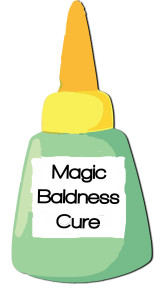 By Carley Thieret | Student Columnist
By Carley Thieret | Student Columnist
When you walk into any bathroom in a college dorm on a Friday or Saturday night, there are certain beauty items that are guaranteed to be present on the counter. The combination of shampoos, conditioners, straighteners and hairdryers make up the majority of college females’ beauty repertoire.
The underlying truth behind this massive amount of beauty supplies is that human beings, especially women, are obsessed with their hair. Girls and some boys spend hours in front of the mirror blow drying, straightening and curling their hair to perfection. For many people, one piece of hair out of place is a beauty catastrophe.
I am more than guilty of being excessively obsessed with my hair. I straighten each strand multiple times, ensuring that not one millimeter of hair is anything but pin straight.
I do not know how many times my mom has unplugged my straightener and warned me that one day I am going to go bald after I burn every inch of my hair off. If I do end up frying all of my hair off, scientists are working on a reliable solution to a problem that many human beings face as they begin to age: a scientific solution to balding.
As we age, the obsession with looking presentable does not diminish, but for many people, the amount of hair to obsess over does. According to the International Society of Hair Restoration Surgery, 35 million American men experience hair loss. According to Medicinenet, 40 percent of men will experience significant balding by the age of 35. Although the concern of balding is generally centered around the male population, 21 million American females experience balding, with 70 percent of them having noticeable hair loss by the age of 80. According to an article by Denise Grady published in The New York Times, Angela Christiano, a hair geneticist and dermatology professor at Columbia University Medical Center is combining her own personal hair loss experiences along with extensive research to formulate a technique that can be used to improve hair growth and lessen the number of people who experience excessive balding each year. Dr. Christiano suffers from a hair loss condition known as alopecia areata.
Dr. Gary Cole of the University of California, Los Angeles explains in his research through The National Institute of Arthritis and Musculoskeletal and Skin Disease that alopecia areata directly affects the scalp and can be present in both males and females. The hair lost from this condition cannot be regrown naturally, which is where the research of Dr. Christiano could be beneficial to the two percent of males and females affected by this alopecia areata.
Although only two percent of Americans suffer from alopecia areata, Dr. Christiano’s research also aims to decrease the percentage of overall hair loss of human beings each year. Her research intends to create a method to increase hair growth as human beings begin to age. Dr. Christiano’s research is still in the preliminary phases, the results she has discovered thus far have been successful. As obsessed as I am with my hair and how it looks, I have never wondered how hair growth actually worked.
According to Grady, the dermal papillae are a grouping of cells at the base of the hair follicles. This allows the hair follicles to rise, therefore causing hair growth. Although this may sound simple, the follicles and their chemical makeup are extremely complex, so the researchers began the experiment by testing their hair growth method on mice. The researchers chose mice because, “Papilla cells in rodents can be transplanted, therefore leading to new hair growth,” Christiano explained.
The cellular composition in mice allows the surrounding skin cells to form hair follicles. Human papilla cells on the other hand, lose the ability to make hair follicles form. The new method of research being conducted changes the way that the hair cells are grown.
The researchers in this experiment believe that a breakthrough in hair growth must be originated from the technique used to grow the hair. The researchers analyzed that hair grows more effectively in clumps, so they tested this by culturing the papilla of seven men undergoing hair transplants.
The experiment added a technical component in the sense that the skin graph being tested was a foreskin that is 100 percent hairless. The researchers concluded that if hair can be grown on hairless foreskin, their study is on the way to reaching a breakthrough to control human balding.
Dr. Christiano stated that they are encouraged by the success of the experiment so far, but there is still work to be done in creating a guaranteed formula to improve hair growth. Obsessing over image is something most people in the world are capable of, no matter the age.
Whether someone is 14 or 89, appearance can sometimes be everything. It is understandable that people would want to keep every hair on their heads no matter what. This research will help the people who are losing more hair everyday. With the ability for hair to grow back, the possibilities are endless.
This research is a positive first step in boosting the confidence of those suffering from hair loss at an early age, and at least I know that if I burn all of my hair off, there is a way to grow it back.
Carley Thieret is a sophomore multiplatform journalism and public relations major and can be reached at thieretc@duq.edu



Good article. Maybe you could provide readers an update to her progress?
Very well written article on hair/hairloss. As you have stated, many researchers/companies are working on therapies to regrow hair. I write about many of these developments on my blog. Glad you are sharing the hope and good news.
wow what an article